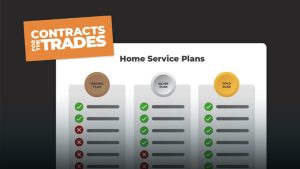Precision Marketing: Leveraging Detailed Buyer Personas for Higher ROI
August 16, 2023 | Read: 7 minutes

Every once in a while, we come across a piece of content that hits just right.
When this happens, it’s likely that you match that brand’s “buyer persona”. But what does that mean?
Coming across content that resonates can create connections between people, brands, and products. It might strike an emotional chord, make us look at something in a different light, or simply make us laugh.
It’s no surprise, then, that having detailed buyer personas can be a huge help to your own brand. After all, according to the Marketing Insider Group:
56% of companies have generated higher quality leads using buyer personas, with around a quarter who use personas generating more leads overall.
Despite this compelling evidence, many marketers and sales teams don’t take the necessary steps to get the maximum possible value from the personas they’ve established.
Knowing your customers on an intimate level is only as valuable as what you do with this information. You must use it to resonate with your target audience and help them feel great about you.
In this post, we’ll look at five ways you can leverage detailed buyer personas for a higher ROI.

What is a buyer persona?
A buyer persona will help your business to focus on who exactly you’re selling to. With a clear picture of who to target, your business can strategize about how to engage and successfully sell to your customers.
Why do you need a buyer persona?
Buyer personas are beneficial for all different types of businesses.
When staff are all on the same page about who to sell to, you can work more efficiently together to solve customers’ problems and even boost revenue.
A buyer persona helps businesses to build a useful picture of the various wants, needs, and desires of their customers. These details are necessary if you’re to sell in a more targeted way that drives success.
5 ways you can leverage a detailed buyer persona to boost ROI:
1. Review How Your Staff Are Monitoring Socials
Like any established brand, your organisation probably has a presence on many different social media platforms.
Though multiplying your touchpoints can help to connect you with some highly active new customers, it’s important to make sure your marketing efforts are being distributed in a way that reflects your detailed buyer personas.
If your ideal customer is spending the majority of their time on Instagram and TikTok, there’s no sense in having your marketing staff invest too much effort into writing posts for your LinkedIn profile.
Take some time to review the data you have on where your buyer personas are most active. This way, you can align your staff’s activities with this behaviour. Even relatively small tweaks to established targets can make all the difference to your audience engagement.
2. Review and Fine-Tune Style Guides
Once you’re monitoring the right conversations in the right social spaces, you’ll be better equipped to fine-tune the way you communicate with your audience.

Talking with your audience in a tone that seems forced or foreign is a surefire way to alienate them. With the rapid pace of conversations on social media, it’s important to make sure your brand’s communications are as consistent as possible. This means your marketers are all singing from the same hymn sheet when they interact with different segments.
Each of your detailed buyer personas is going to have subtle nuances in the way they talk. Your brand style guides should be fine-tuned to mirror them.
Using abbreviations, slang, buzzwords and anything else that’s noticeable in your audience segments’ way of talking will show them that you’re a part of their community, rather than another entity vying for their money.
3. Know Your Negative Personas
Negative buyer personas (sometimes called exclusionary personas) are a category of “anti-segments”. That is: the people who are the least likely to make it through the stages of your funnel and convert.
Every marketer wants to avoid wasting time and resources on people who are explicitly less likely to make a purchase.
Unfortunately, though, negative buyer personas can have a lot of crossover with your more valuable audience segments. This can make it hard to ensure you’re separating the wheat from the chaff.
Using much the same techniques you’d use in creating your regular buyer personas, such as studying third-party research, running surveys, and leveraging social media insights, you’ll soon be able to segment out those “bad apples”. These are customers who are less likely to respond to your marketing and make a purchase.
With a picture of your negative personas that matches your others in detail, you’ll find it easy to set rules and standard practices that will prevent you from wasting your time on the wrong people.
4. Revisit Your Approach to Segmentation
If your brand has experienced a period of rapid growth in its early days, then you may still be using an approach to segmentation that’s more aligned with the homegrown business you used to be, rather than the more stable organisation you are now.
Maybe you were stretched for time and resources and spent less time on segmentation than you should have, and you need to schedule a thorough overhaul of your current buyer personas.
Perhaps you simply didn’t have the funds for the right support in the early days. If that’s the case, you could benefit from a platform like Outbase. Outbase features are made to help “segment different cohorts to maximize outreach”.
If you’re running your marketing based on an outdated view of your audience, you’re going to have a hard time extracting the maximum possible ROI from your buyer personas. Sometimes, re-appraising your old approach to customer segmentation can be all it takes to build a more powerful set of personas.
5. Look Into Dynamic Content
Though it’s been around for a long time now, many marketers have been slow to adopt dynamic content. This forward-thinking feature allows you to show different content based on the behaviour of specific site visitors.
Some common examples of dynamic content include:
- user-specific product recommendations for e-commerce brands,
- dynamic price points that change based on a certain product’s supply and demand,
- automated customer surveys whose results will be attached to customer profiles and which influence the kind of content they’re served.
Creating dynamic content can be pretty resource-intensive. That’s both in terms of planning and designing the content itself. That includes the web development resources required to make it work.
However, if you’re able to tailor the content you serve to your detailed buyer personas, you’ll build an all-around more engaging user experience. This will drive up your chances for engagement, conversions, and long-term loyalty.
For more information on how dynamic content can be integrated into your sales and marketing drives, Litmus has a free ebook made in collaboration with Salesforce: it’s a great place to start!
Making personas work for you…
Though all modern marketing departments are aware of their buyer personas, many aren’t taking the kind of proactive approach that maximises the value they can extract from these segments.
By revisiting the initial work you carried out to create your personas, fine-tuning your communication with different segments, and making sure you have the right tools in place, you’ll be able to perfectly align your marketing with your audience and enjoy a much healthier ROI.
A buyer persona means you can have a richer, more successful sales experience.
Speaking of, if you’re looking to take your sales strategy success further, be sure to explore Commusoft’s Sales CRM. And for even more help with selling, discover qualifying questions you can ask, below:













